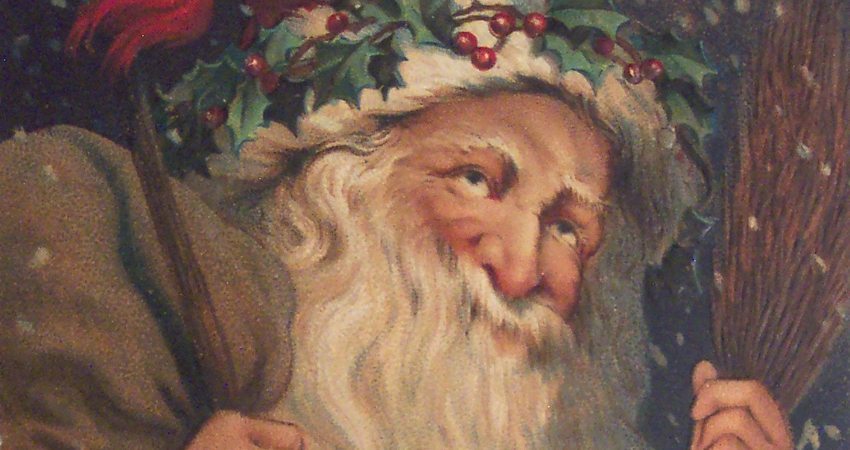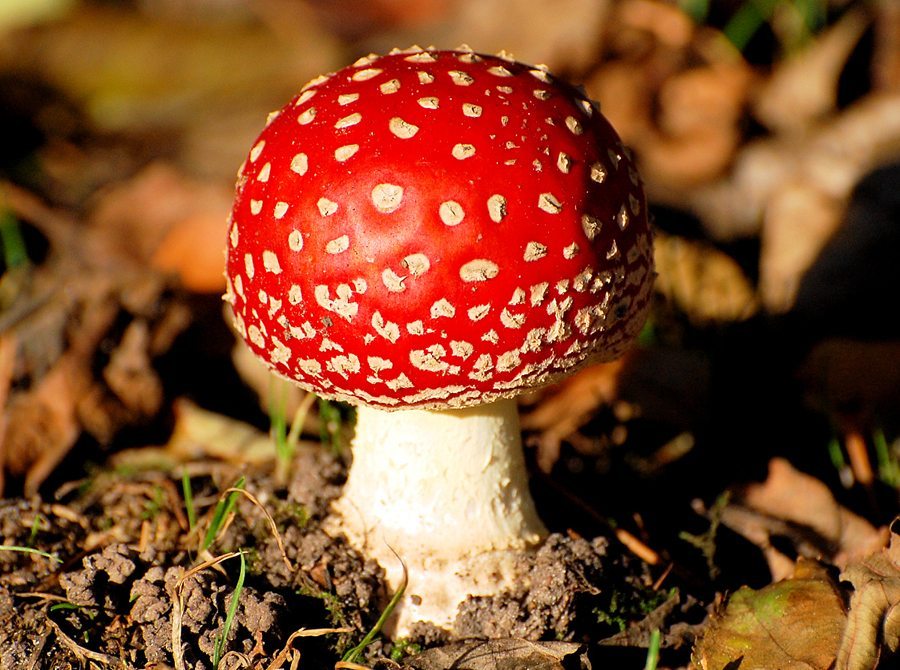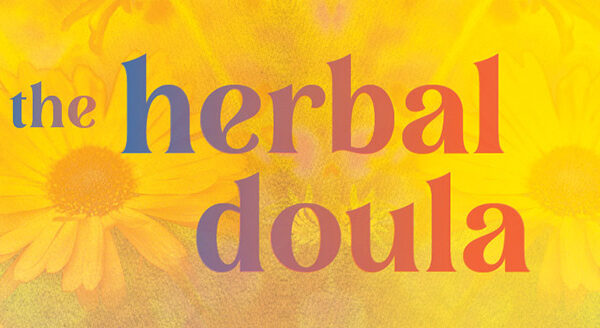
Santa’s Secret Helper: Amanita Muscaria
Categories: Health & Healing Indigenous Cultures & Anthropology
Whatever you’re celebrating this time of year, it’s almost inevitable that you’ll encounter Santa Claus at some point. Whether he’s at the mall, on your beverage, or a pub-crawling mob donning red coats and white beards, blocking sidewalks and intersections—the man is ubiquitous this time of year. However, slightly less well known is Santa’s secret relationship with psychedelic mushrooms.
Christmas traditions find their inspiration and origins in all manner of places, from Scandinavian deities to Roman emperors. Even, as it turns out, in the humble mushroom:
 Meet Amanita muscaria. Variously known as toadstool, fly agaric, or, as Dale Pendell calls it, “Queen of the Kingdom,” Amanita muscaria is one of the most recognizable mushrooms in the world. Its big red and white spotted cap is depicted in video games, fairy tales, cartoons, and yes, Christmas décor. The fungus prefers growing under pine or birch trees, in the Northern Hemisphere, and finds its origins in Siberia, which is where our story begins.1, 2
Meet Amanita muscaria. Variously known as toadstool, fly agaric, or, as Dale Pendell calls it, “Queen of the Kingdom,” Amanita muscaria is one of the most recognizable mushrooms in the world. Its big red and white spotted cap is depicted in video games, fairy tales, cartoons, and yes, Christmas décor. The fungus prefers growing under pine or birch trees, in the Northern Hemisphere, and finds its origins in Siberia, which is where our story begins.1, 2
To set the scene, let’s first picture a coniferous forest in the dead of a Siberian winter; not unlike the North Pole. Wandering among the pine trees, nibbling on things here and there, are a few reindeer. One reindeer picks out a bright red, tasty-looking mushroom and takes a small bite…
According to Dale Pendell’s magical book Pharmako/Gnosis: “The Siberian accounts collected by Wasson (1968) generally present Amanita intoxication as secular, and characterized by alternating periods of slumber and manic frenzy. In one instance it is reported that the mushroom is taken to give one the courage to murder an enemy.”
So, this reindeer has his bite of mushroom, and he’s off! Bounding through the snow on a wild and frenzied trip. To anyone watching—especially if they’d had a taste of mushroom, too—it might even look like he’s flying. And, according to some, people were watching. Siberian shamans, equally interested in the mushrooms effects, would either gather the mushrooms and hang them to dry right there on the pine tree (like a big red ornament) or wait for the intoxicated reindeer to urinate, and drink that instead (a quick and easy way to distill the toxins).3
Pendell writes:
Maret Saar (1991) divides the use of Amanita muscaria by the Siberians into four classes: sacred and magic activities, such as divination and communicating with the dead; the recital of epics (“after consuming two mushrooms they would go mad and sing for hours in a loud voice”); for difficult physical work, such as haymaking and pulling boats with ropes; and as a narcotic, for euphoria and dreaming.
While Pendell doesn’t refer to Amanita as an entheogen, others argue that these mushrooms were for use in spiritual ceremonies performed around the winter solstice. The shamans would don red and white suits and head out into the forest to hunt mushrooms. Some go so far as to claim that that in their euphoric state, the shamans would pop into snow-covered yurts via the roof, delivering the gift of Amanitas or reindeer urine, for everyone to enjoy.4 There are also those who find all of this preposterous, saying that yes, there are Siberian shamans and they may indeed have used mushrooms in their ceremonies, but they weren’t known for wearing red, driving sleighs with reindeer, or hopping into people’s chimneys.6
In truth, the Santa Claus we know today probably has more in common with Saint Nicholas, Father Christmas, Sinterklaas, or Odin—all of which are characters with fascinating stories of their own.7 Still, the mushroom motif remains a part of traditional Christmas decor on ornaments, yule logs, and on greeting cards. I haven’t found any explanations for this that are more interesting, or more fun, than that the man in red and his eight tiny reindeer are all under the influence of something freaky on Christmas Eve.
Sources:
1. “Amanita Muscaria (fly Agaric)” by Amanita Muscaria, Kew
2. “Beringian Origins and Cryptic Speciation Events in the Fly Agaric (Amanita Muscaria)” by J. Geml, G.A. Laursen, K. O’Neill, H.C. Nusbaum, and D.L. Taylor, Institute of Arctic Biology
3. “Shaman Claus: The Shamanic Origins of Christmas” by Matt Toussaint, Reality Sandwich
4–5. “Santa and the ‘Shrooms: The Real Story behind the “design” of Christmas” by Holly McWhorter, Inhabit
6. “Did ‘Shrooms Send Santa and His Reindeer Flying?” from NPR
7. “St. Nicholas to Santa: The Surprising Origins of Mr. Claus” by Brian Handwerk, National Geographic
Tags: Dale Pendell Mushrooms & Mycology



